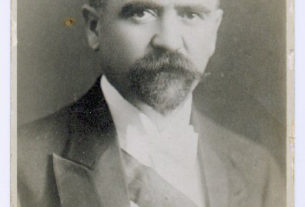To begin a discussion of the Black Experience in Mexico, it is important to establish the quantitative significance of the black slave population in the colonial era. One of the most frequent responses I get when discussing my research with Mexicans, or Americans for that matter, is “there couldn’t have been more than a handful of slaves in Mexico.” This assumption is made because in most parts of Mexico, today, you don’t see many black people at all. The assumption is made that if there aren’t many blacks in Mexico, now, there never were. As we will see, this is not entirely true.
The first African slave brought to Mexico is said to be one Juan Cortés, a slave who accompanied the conquistador Hernán Cortés in 1519. The Indians, spellbound by his dark skin, for they had never seen an African before, took him for a god! Another of the early conquistadores, Pánfilo Narvaez, brought a slave who has been credited with bringing the devastating smallpox epidemic of 1520. Mexican anthropologist Gonzalo Aguirre Beltrán estimates that there were 6 blacks who took part in the conquest of Mexico.
These early slaves were more personal servants of their masters, who may be thought of as squires. These slaves were most likely taken from Africa, then transported to Seville, where early slaves were christianized, and they probably spoke Spanish by the time they reached the New World. These slaves didn’t come over on slave ships as part of an overt slave trade. The slave trade that changed the demographic face of Mexico began when King Carlos V began issuing more and more asientos, or contracts between the Crown and private slavers, in order to expedite the trans-atlantic trade. At this point, after 1519, the New World received bozales, or slaves brought directly from Africa without being christianized. The Spanish Crown would issue these asientos to foreign slavers, who would then make deals with the Portuguese, for they controlled the slave “factories” on the West African coast. Aside from these asientos, the Crown would grant licenses to merchants, government officials, conquistadores, and settlers who requested the privilege of importing slaves.
The Crown had very few problems doling out these asientos and licenses, as a direct correlation was seen between the number of slaves imported to the new colony and the colonization and economic development of the colony. For these economic reasons, the black population soared to over 20,000 by 1553. According to early census data and allowances made for escaped slaves, Aguirre Beltrán arrives at the following estimates of the black population:
Black Population in Colonial Mexico
1570 AD 20,569
1646 AD 35, 089
1742 AD 15,980
The numerical significance of these figures becomes clear when we compare them to the Spanish population of the colonial era. In the early colonial period, European immigration was extremely small–and for good reason. There were great risks and many uncertainties in the New World, and few families were willing to immigrate until some assurance of stability was demonstrated. Because of this hesitance, very few European women immigrated, thus preventing the natural growth of the Spanish population.
The point that must be made here is the fact that the black population in the early colony was by far larger than that of the Spanish. In 1570 we see that the black population is about 3 times that of the Spanish. In 1646, it is about 2.5 times as large, and in 1742, blacks still outnumber the Spanish. It is not until 1810 that Spaniards are more numerous.
There has been a fair amount of scholarly work done on blacks in Mexico, the majority of which is historical. Some work highlights the different types of labor blacks performed in Mexico, and other work focuses on general aspects of Mexican slave society. I have included a very partial list of sources that would be a good starting point for further exploration. In addition, the majority of this historical work concerns either blacks in Veracruz or are more general works, with much less having been done on the Costa Chica. And as far as work being done on the contemporary situation, very little has been done at all. Hopefully, that is where I can make a contribution!


